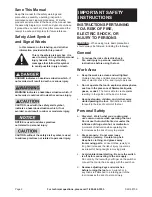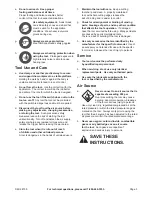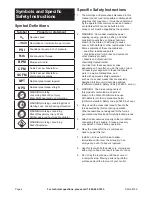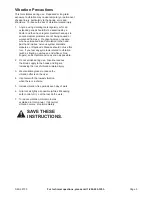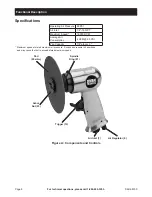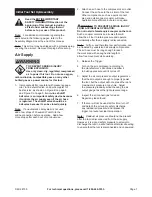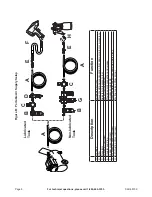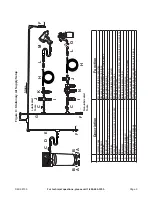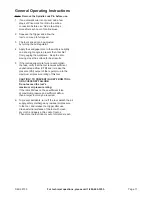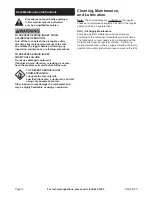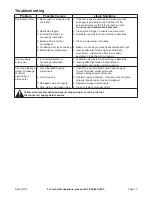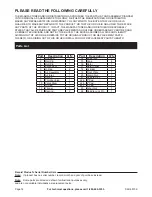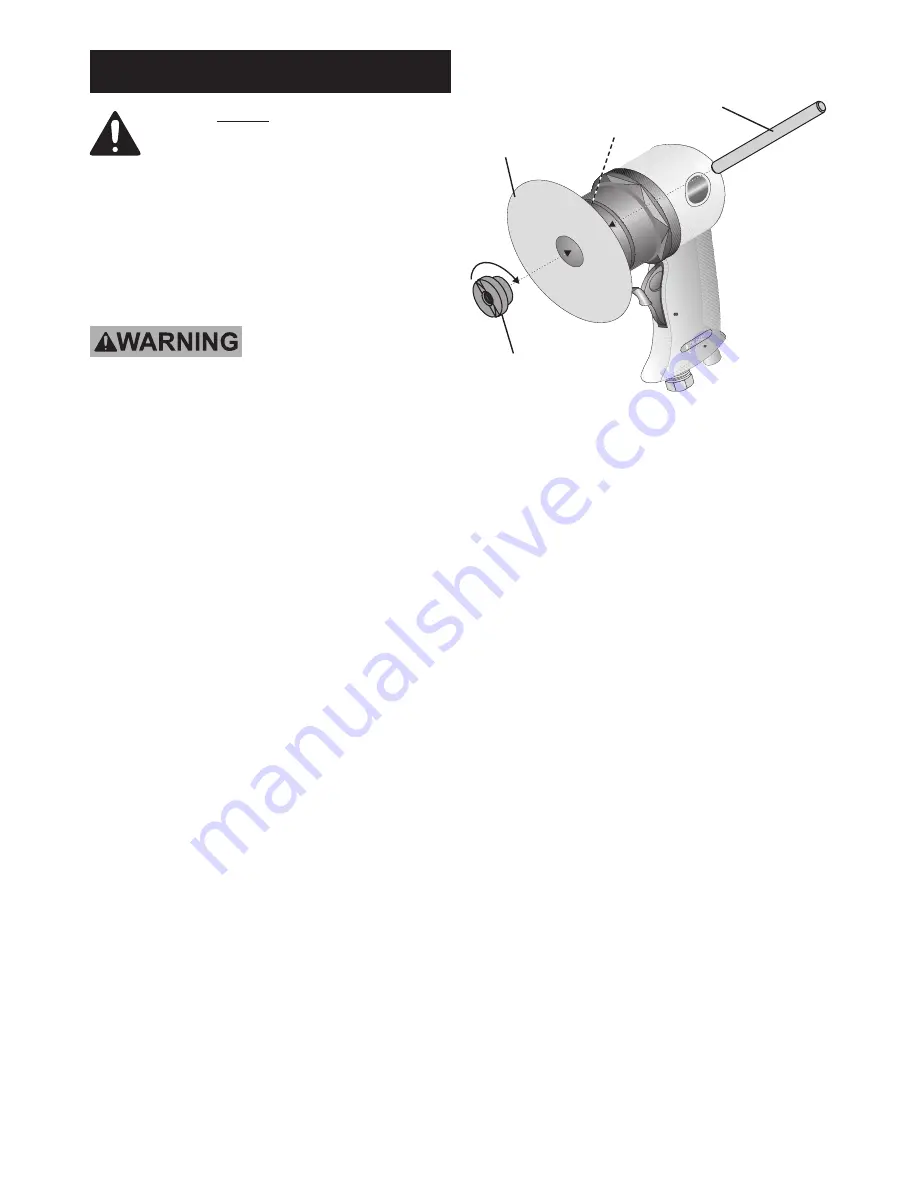
Page 10
For technical questions, please call 1-800-444-3353.
SKU 68739
Operating Instructions
Read the ENTIRE IMPORTANT
SAFETY INFORMATION section at the
beginning of this manual including
all text under subheadings therein
before set up or use of this product.
Inspect tool before use, looking
for damaged, loose, and missing
parts. If any problems are found,
do not use tool until repaired.
Tool Set Up
TO PREVENT SERIOUS INJURY FROM
ACCIDENTAL OPERATION:
Turn off the tool, detach the air supply, safely
discharge any residual air pressure in the tool,
and release the trigger before performing any
inspection, maintenance, or cleaning procedures.
TO PREVENT SERIOUS INJURY:
Do not adjust or tamper with any control or
component in a way not specifically explained
within this manual. Improper adjustment can
result in tool failure or other serious hazards.
TO PREVENT SERIOUS INJURY:
DO NOT USE GRINDING DISCS, GRINDING WHEELS,
OR CUT-OFF WHEELS WITH THIS TOOL.
This tool has no safety shield.
TO PREVENT SERIOUS INJURY:
All accessories must be rated at
or above 18,000 RPM.
1. Insert the Spindle Lock Pin (24) into the hole
on the Spindle Ring (21). See Figure D.
Spindle Lock Pin (24)
Spindle Ring (21)
Figure D: Installing the Pad
Pad (22a/b/c)
Arbor Nut (23)
2. Place the desired Pad (22a/b/c) onto the Spindle
Ring. Apply a sandpaper disc of the same size to the
Pad with the rough side facing away from the Pad.
3. Secure Pad in place with the Arbor Nut (23).
4. Remove the Spindle Lock Pin before use.
Work Piece and
Work Area Set Up
1. Designate a work area that is clean and well-lit.
The work area must not allow access by children
or pets to prevent distraction and injury.
2. Route the air hose along a safe route to reach
the work area without creating a tripping hazard
or exposing the air hose to possible damage.
The air hose must be long enough to reach
the work area with enough extra length to
allow free movement while working.
3. Secure loose workpieces using a vise or clamps
(not included) to prevent movement while working.
4. There must not be hazardous objects
(such as utility lines or foreign objects) nearby
that will present a hazard while working.


